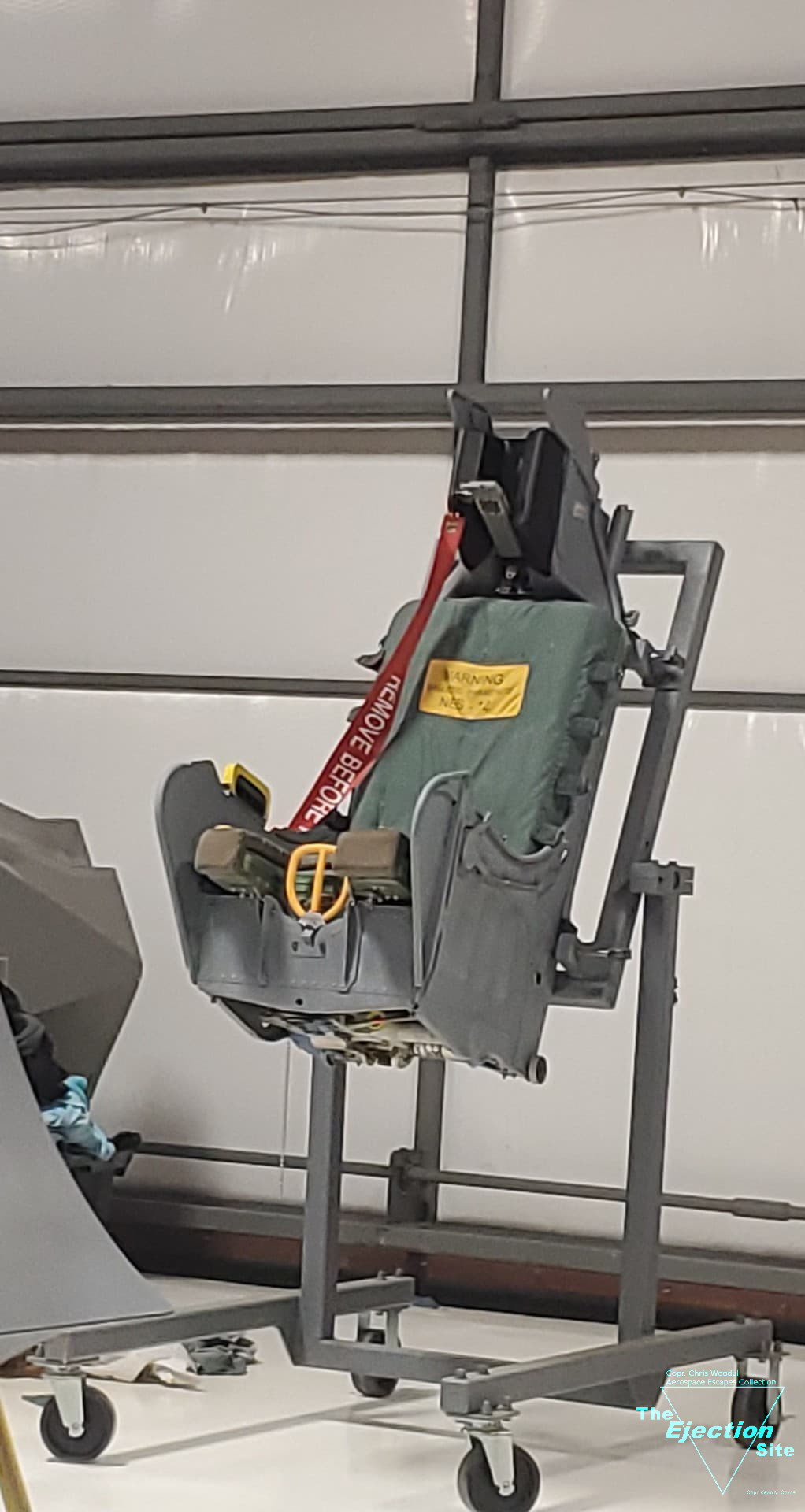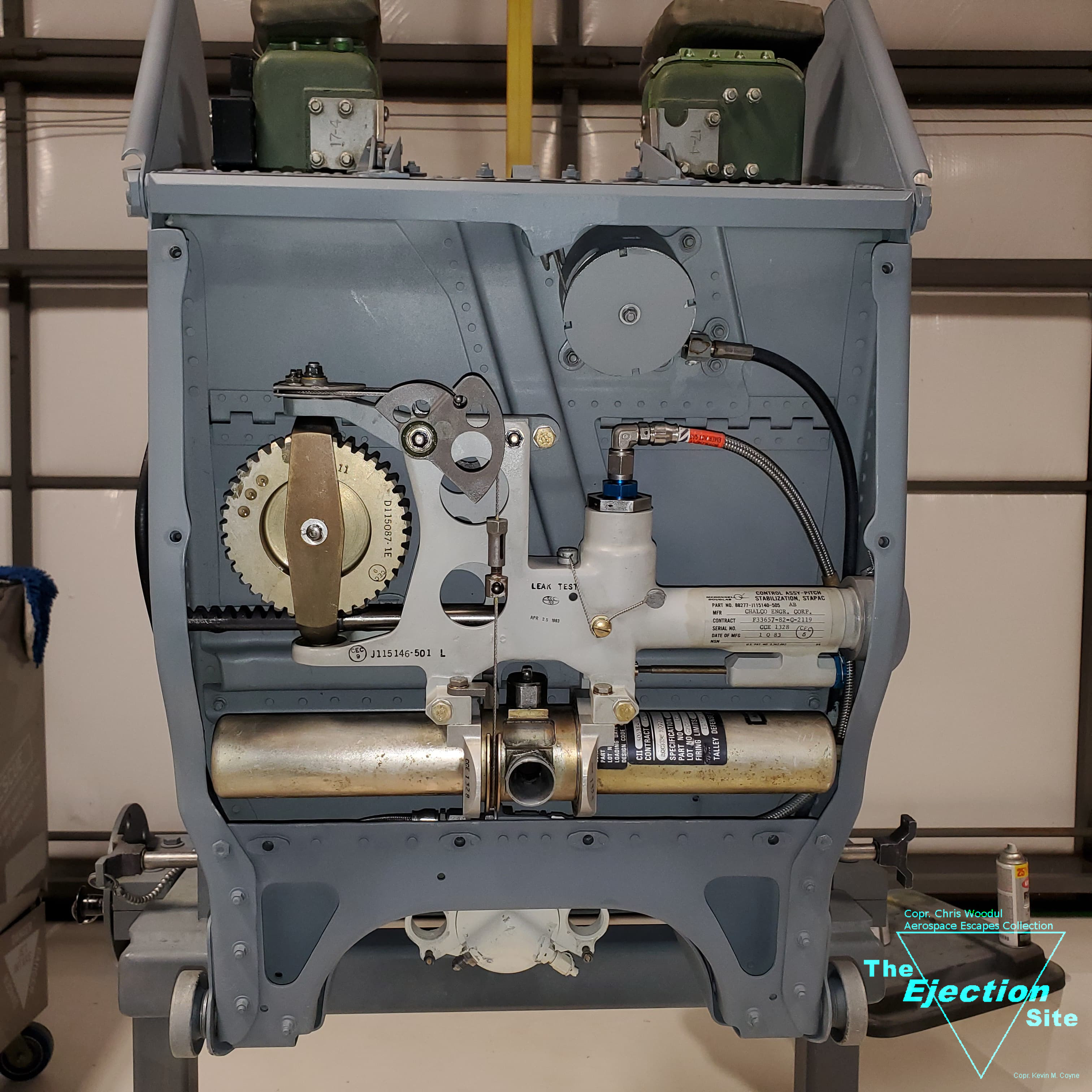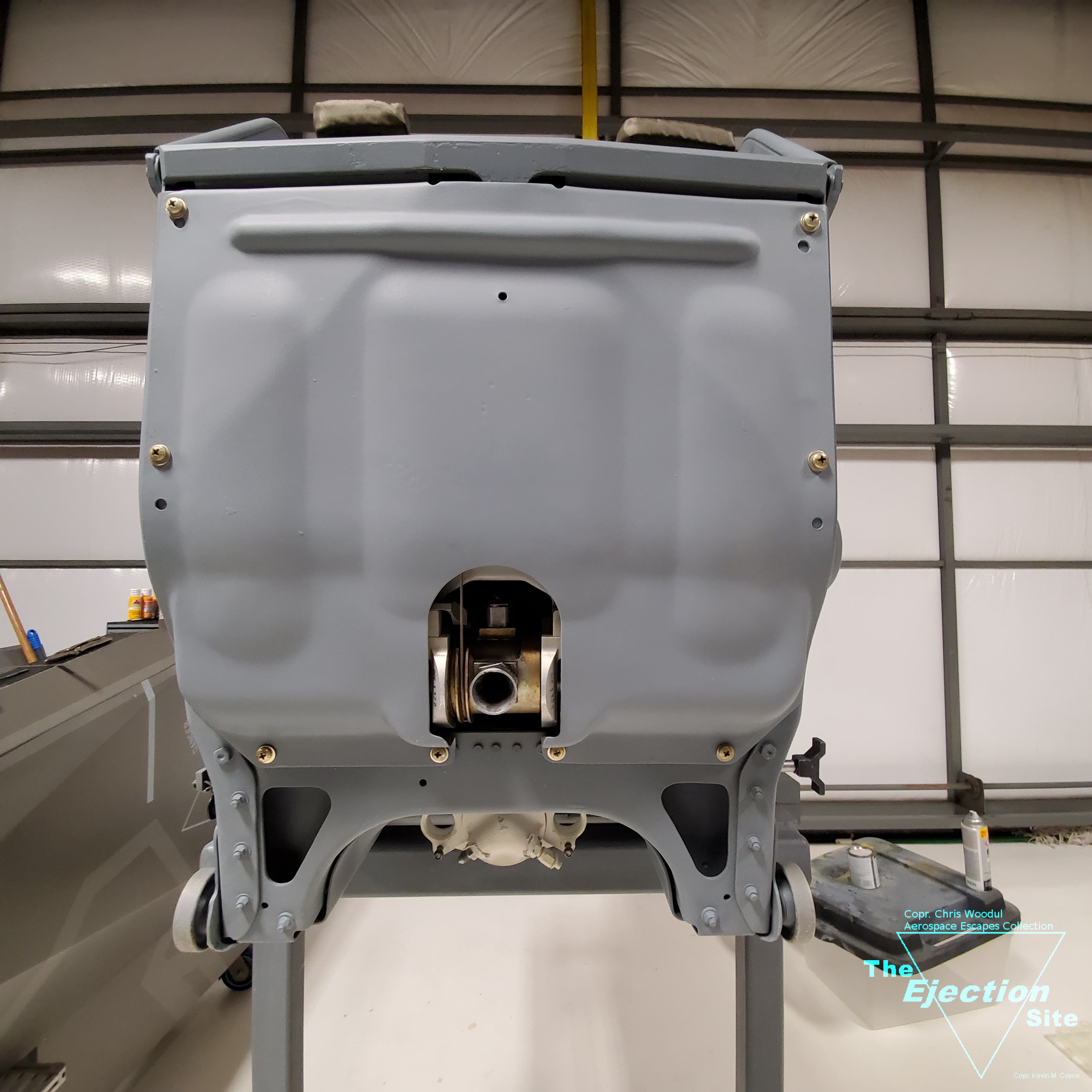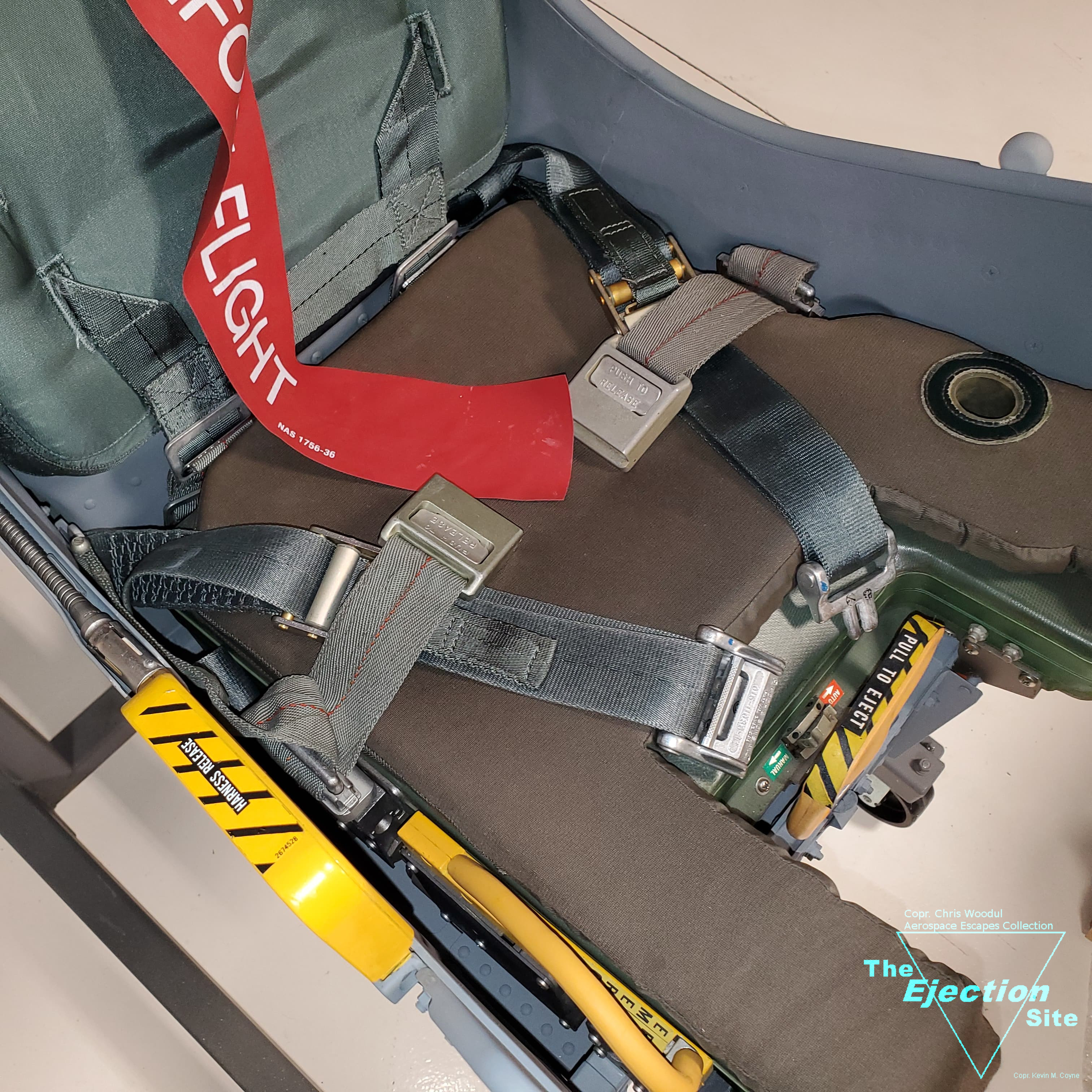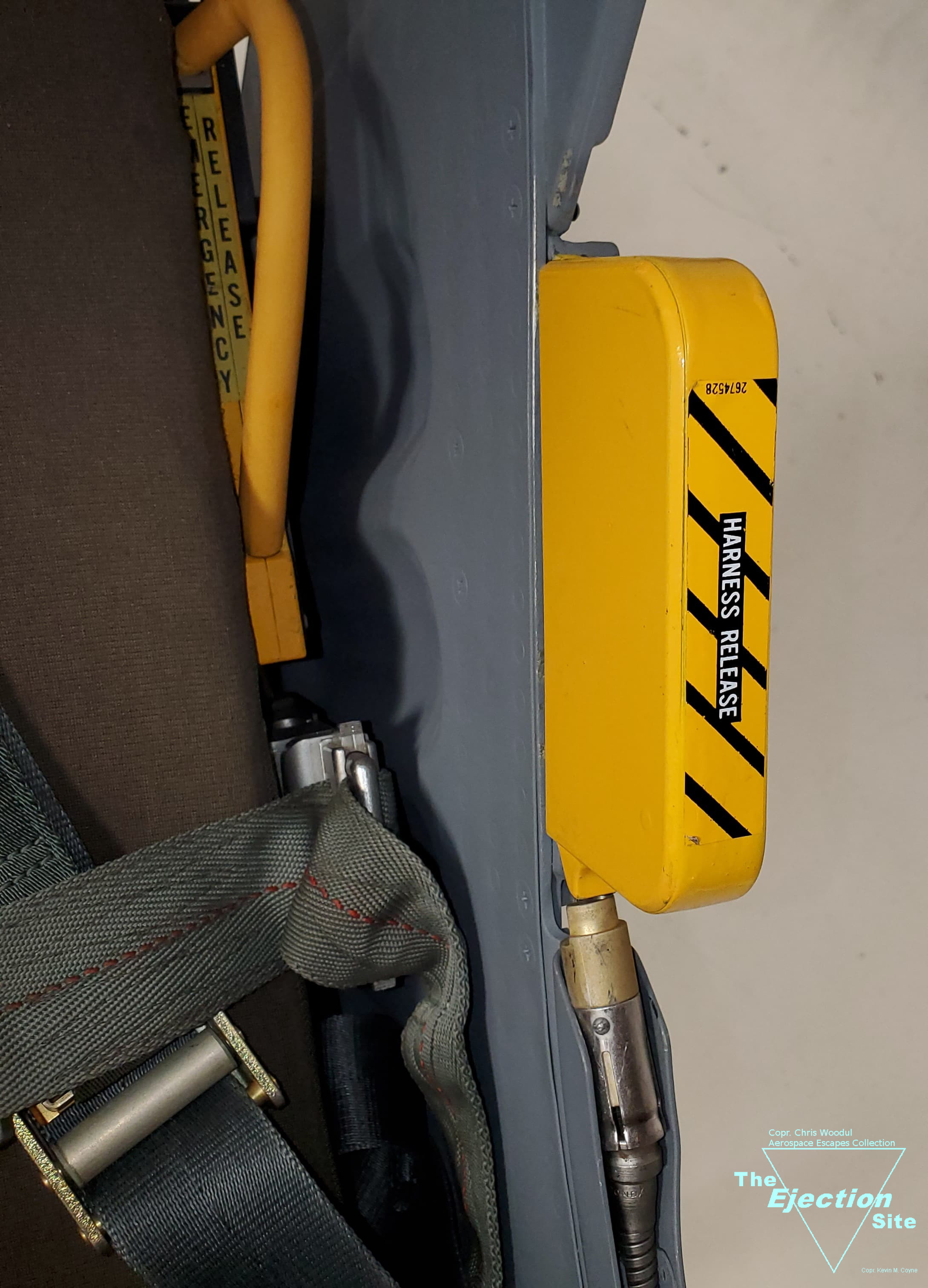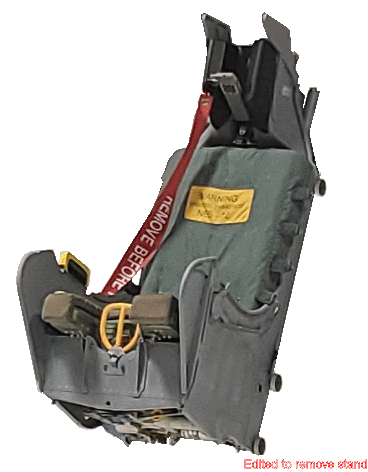 Note: This article covers the early ejection seat used in the A-10 Warthog during the initial testing and production. The seat was replaced by the ACES II later. For an article on the A-10 ACES II Click Here
Note: This article covers the early ejection seat used in the A-10 Warthog during the initial testing and production. The seat was replaced by the ACES II later. For an article on the A-10 ACES II Click Here
The Escapac series by Douglas Aircraft Corporation has a long and interesting history. This IE-series seat is one of the more advanced seats due to the addition of the underseat STAPAC rocket for resisting pitch excursion. This rocket is mounted in the back rear of the seat and uses a gas generator to spin up a gyroscope. The gyro is mechanically linked to the rocket and the precession of the gyro causes the rocket nozzle to be rotated in the opposide direction of the pitch motion of the seat. Pitch motion can be caused by windblast or by an offset between the center of mass of the seat/man package and the rocket catapult thrust.
It also features a Seat-Man-Separation rocket which is mounted on the upper left shoulder area of the seat and fires upwards and forward. This is nicknamed the 'ear-burner'. This rocket is fired as the lap belt and inertia reel straps are released to provide for a positive separation from the occupant. It provides thrust to pivot the seat back and down rotating roughly about the front edge of the seat. This action also arms the parachute release mechanism in the J117140-1 parachute assembly.
The seat on this page was restored by Chris Woodul of the Aerospace Escapes collection
